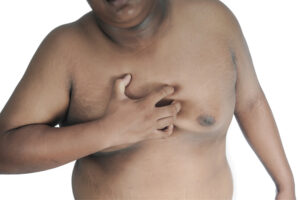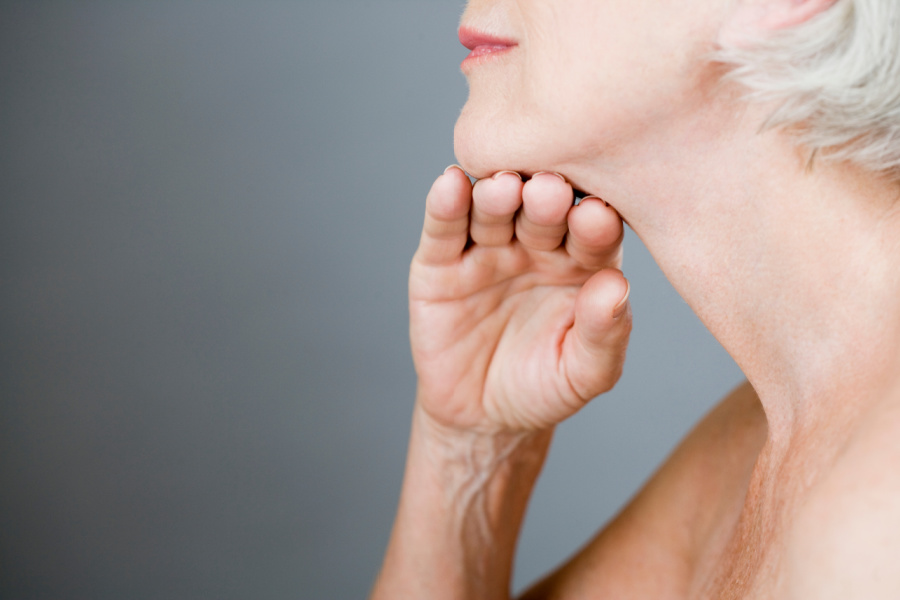Fall in Love with Your Body Many people struggle with stubborn belly fat that refuses to go away, no matter how much they diet or...
As we get older, it’s completely normal for our bodies to change in ways we might not expect—or particularly welcome. For many men, one common concern is the development of excess tissue on the chest, often described as “man boobs” or gynaecomastia.
Despite how widespread it is, gynaecomastia still carries a stigma. Popular culture often treats it as a joke, which can make men feel self-conscious or embarrassed about their appearance. In reality, this condition is usually caused by natural hormonal shifts, genetics, weight changes, or certain medications—and it’s far more common than most people realise.
Many men choose to address gynaecomastia because it affects their confidence, the way clothes fit, or how comfortable they feel in their own skin. The good news is that a range of treatment options exist, from lifestyle changes to medical procedures.
Below, we explore the most effective ways to reduce or treat gynaecomastia.
Understanding Gynecomastia
Gynecomastia is the enlargement of breast tissue in men or boys, often caused by hormonal fluctuations, lifestyle factors, or underlying health issues. Commonly referred to as “man boobs,” the condition can be physically uncomfortable and may significantly affect confidence or emotional wellbeing.
There are many potential triggers for gynecomastia, including:
-
Hormonal imbalances (such as higher oestrogen or lower testosterone levels)
-
Certain medications, including antidepressants, antibiotics, anti-androgens, and some heart medications
-
Thyroid disorders
-
Chronic health conditions
-
Poor diet or weight changes
-
Excessive alcohol consumption or recreational drug use
Because several factors can contribute to breast tissue enlargement, it isn’t always possible to pinpoint the exact cause without a medical assessment.
What Is Pseudo-Gynecomastia?
Pseudo-gynecomastia is a similar-looking condition, but instead of glandular breast tissue enlargement, the increase in chest size is caused by fat accumulation around or behind the nipples. Although it can resemble true gynecomastia, the causes and treatment options may differ.
Since pseudo-gynecomastia is strongly linked to body fat and lifestyle patterns, it is often more preventable and may improve with targeted exercise, dietary changes, or weight-management strategies. In contrast, true gynecomastia involves glandular tissue and may require medical or surgical treatment to achieve permanent results.
Understanding which condition you’re dealing with is key, as the most effective approach to reducing male chest enlargement depends on whether the cause is hormonal, fatty, or both.
Reducing the Risk of Male Chest Enlargement
While not all causes of male chest enlargement can be prevented, there are several lifestyle habits that can significantly reduce your risk — especially if your concern is related to fat buildup rather than glandular breast tissue. Taking early steps to maintain hormonal balance, manage body fat, and support overall health can make a noticeable difference over time.
Healthy Habits to Lower Your Risk
Avoiding excessive alcohol and recreational drugs is one of the most effective preventative measures. Alcohol is calorie-dense and can contribute to weight gain, but it also has a direct impact on hormone levels, including the suppression of testosterone, which can play a role in chest enlargement.
Regular physical activity is another key factor. While it’s not possible to target fat loss in one specific area, consistent exercise — ideally at least three sessions per week — can help lower overall body fat, improve muscle tone, and support a healthier hormone balance. Incorporating both strength training and cardiovascular exercise is especially beneficial for reducing chest fat and improving upper body definition.
Diet also plays a major role. A balanced, nutrient-rich eating pattern that includes plenty of fruits, vegetables, lean proteins, and whole grains promotes healthy weight management. Reducing your intake of processed foods, sugary snacks, and high-fat meals can help prevent excess fat accumulation around the chest area.
Is Chest Fat Hard for Men to Lose?
For many men, losing chest fat can be challenging. Even with a healthy diet and regular exercise, the body may hold onto fat in certain areas due to genetics or hormone levels. If noticeable breast tissue has already developed — whether due to fat (pseudo-gynaecomastia) or glandular tissue (true gynaecomastia) — lifestyle changes alone may not fully resolve the issue. In such cases, medical or surgical treatment may be needed to achieve a flatter, more defined chest.
Surgical Solutions for Lasting Results
While non-surgical methods can be helpful, surgery is often the most effective way to permanently reduce enlarged male breasts, particularly when lifestyle changes or medications are insufficient.
Male Breast Reduction Surgery
This procedure is designed to remove excess glandular tissue, which is often the main cause of true gynecomastia. The surgery usually takes one to two hours and can be performed under local or general anaesthesia, depending on the technique used. Male breast reduction is highly targeted and provides a more sculpted, natural chest contour.
Deciding on Surgery
Surgery is usually considered when non-surgical measures have not achieved the desired results. It is highly effective because it removes the tissue causing the enlargement, whether fat, glandular tissue, or both. With proper post-procedure care and a healthy lifestyle, surgical results are long-lasting, providing a permanent improvement in chest appearance.
Gynecomastia Surgery with Dr Fasano
Gynecomastia surgery, or male breast reduction, is a specialised procedure designed to address the overdevelopment of male breast tissue. This condition can result from hormonal imbalances, genetics, certain medications, or lifestyle factors, and may cause both physical discomfort and self-consciousness. The surgery removes excess fat, glandular tissue, and, in some cases, skin to create a flatter, more masculine chest contour.
The procedure is tailored to each individual and may involve liposuction to remove fatty tissue, excision to eliminate glandular tissue, or a combination of both for optimal results. Typically performed under general or local anaesthesia, the surgery lasts around 1–2 hours and is carried out as an outpatient procedure, with most patients resuming normal activities within 3–7 days.
Gynecomastia surgery is ideal for men whose chest enlargement has not improved with diet, exercise, or other non-surgical methods. Candidates should be in good health, at a stable weight, and have realistic expectations for a firmer, more defined chest. Dr Fasano assesses each case individually, creating a customised treatment plan to achieve natural, long-lasting results.




